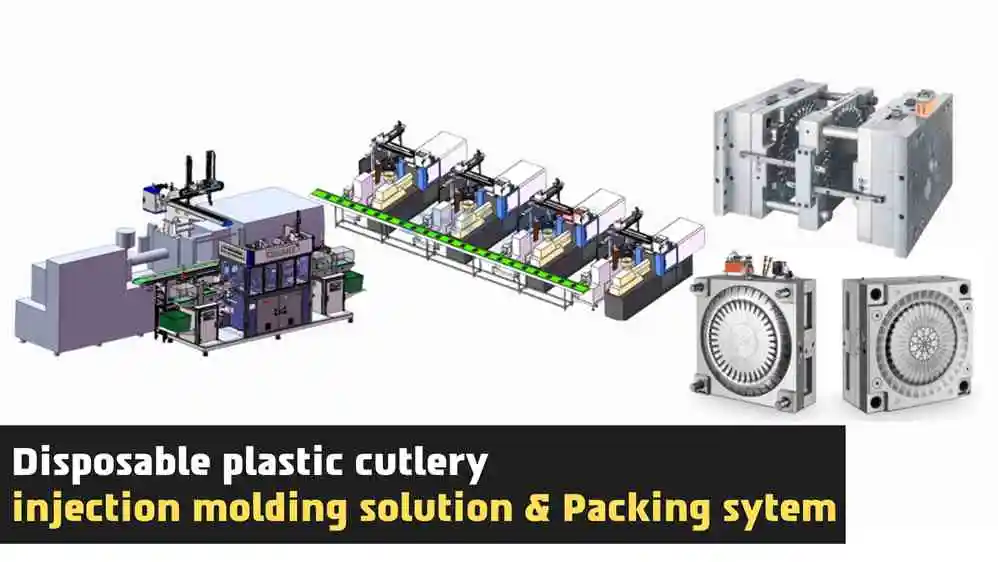Injection molding is a popular method for manufacturing plastic disposable cutlery spoons, fork,s and knives. This process involves melting plastic resin and injecting it into a mold, where it cools and solidifies to form the finished product. While injection molding is an efficient and cost-effective manufacturing method, there are always ways to improve efficiency and productivity. Here are some tips and strategies for improving efficiency in plastic cutlery injection molding:
- Optimize Injection Molding Parameters
One of the most effective ways to improve efficiency in injection molding is to optimize the molding parameters. This involves finding the best combination of injection speed, pressure, temperature, and cooling time to achieve the desired quality and productivity. By fine-tuning the molding parameters, manufacturers can reduce cycle times, minimize scrap, and increase output.
- Use High-Quality Molds
The quality of the mold used for injection molding has a significant impact on efficiency and productivity. High-quality molds can last longer, require less maintenance, and produce consistent results. Manufacturers should invest in well-designed, high-quality molds that are optimized for the specific cutlery product they are producing.
- Automate Where Possible
Automation can greatly improve efficiency in injection molding production. Automated systems can handle tasks such as material handling, mold loading and unloading, quality control and automation packing. By automating repetitive tasks, manufacturers can reduce labor costs, minimize errors, and increase throughput.
- Implement Real-Time Monitoring and Analytics
Real-time monitoring and analytics can provide valuable insights into injection molding processes. By monitoring key parameters such as temperature, pressure, and cycle time, manufacturers can identify issues before they become problems. Analytics can also help identify patterns and trends, allowing manufacturers to optimize processes for improved efficiency and quality.
- Use High-Quality Plastic Resins
The quality of the plastic resin used in injection molding has a significant impact on the finished product. Using high-quality plastic resins can help ensure that the cutlery product has the desired properties such as durability, strength, and heat resistance. High-quality resins can also improve the injection molding process by reducing cycle times and minimizing scrap. Disposable plastic spoon cutlery are typically made out of two types of plastics: polypropylene (PP) and polystyrene (PS).
- Implement Lean Manufacturing Principles
Lean manufacturing principles can be applied to injection molding production to improve efficiency and reduce waste. This involves identifying and eliminating non-value-added steps in the production process, optimizing material flow, and reducing inventory. By implementing lean manufacturing principles, manufacturers can streamline production and reduce costs.
- Continuous Improvement and Training
Continuous improvement and training are essential for improving efficiency in injection molding production. By continually seeking to improve processes and training employees on best practices, manufacturers can optimize production and improve product quality. Encouraging feedback from employees can also help identify areas for improvement and increase overall efficiency.
In conclusion, improving efficiency in plastic or disposable cutlery spoon, fork, and knife injection molding requires a combination of optimization, automation, and continuous improvement. By implementing these tips and strategies, manufacturers can reduce costs, increase productivity, and produce high-quality cutlery products.
CHUANY is the only one disposable spoon turnkey solution provider in China, providing high-quality spoon mold, automation packing system and high-speed injection molding industry, helping customers to win in the competitive market.

